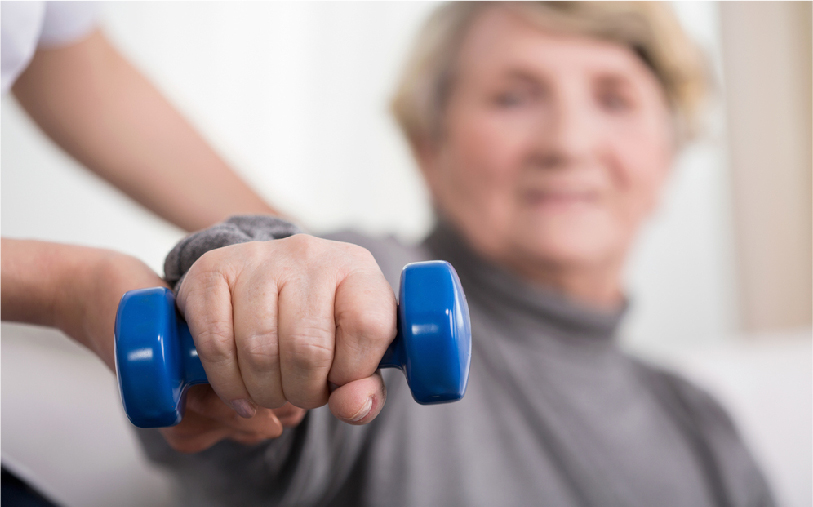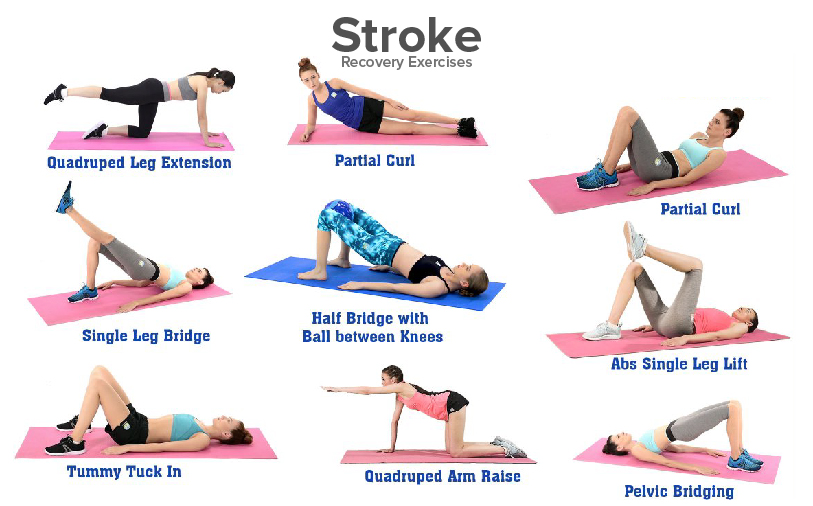
Recovery after a stroke can be challenging and involves rebuilding strength, mobility, and emotional resilience. A stroke can cause serious incapacitation, such as partial or complete paralysis and reduced coordination. Even though every patient's rehabilitation journey is unique, participation in specific exercises directed toward stroke patients is necessary for rebuilding strength, mobility, and independence. A dedicated stroke rehabilitation center provides personalized therapy and exercises that improve motor skills and restore physical functions.
In this blog, we will discuss various stroke rehabilitation exercises that can help in recovery, explain the benefits of these activities, and highlight the importance of a professional rehabilitation program at a Stroke Recovery Exercises Rehab Center in Hyderabad.
Also Read: Why Physiotherapy Is Crucial For Spinal Cord Injury Patients?
 Understanding Stroke Rehabilitation
Understanding Stroke RehabilitationStroke rehabilitation is a holistic process that includes various therapies for lost functions and adjustment to the change. This approach aims to ensure that the patient can attain as much independence as possible and with minimal risks of complications or further strokes. This can be achieved by setting up a structured rehabilitation program that includes, physical therapy, occupational therapy, speech therapy, and even psychological counseling.
Neuroplasticity is the phenomenon where the brain reforms itself. Continuous and focused rehabilitation practices stimulate neuroplasticity, which enables the brain to rewire itself and regain some of its lost functions. Rehabilitation helps reduce the risk of complications like muscle stiffness and joint issues, allowing for better mobility and improved function. For individuals affected by paralysis, exercise plays a crucial role in improving strength, mobility, and overall function. The primary focus of these exercises is to help patients regain muscle strength, flexibility, and coordination, tailored to each individual's needs.
Also Read: Autism Spectrum Disorder (ASD): Causes, Symptoms, And Treatment In Hyderabad
The nature of impairment and the body parts affected determine the type of exercises in a stroke rehabilitation program. The following are some common exercises used in rehabilitation:
Strengthening is another essential need of a stroke patient, especially a unilateral weakness or paralysis victim.
For stroke patients, increased joint flexibility must be prevented from stiffness. Rehabilitation exercises with ROM maintain joint health and increase mobility.
Most people who have suffered a stroke will have impaired balance and an increased risk of falling. An exercise improving balance and coordination is an essential aspect of stroke rehabilitation.
Stretching activities prevent muscle stiffness and make the body flexible, therefore very important for daily exercises.
Gait training exercises are an essential part of stroke recovery, helping improve walking ability and reduce the risk of falls.
Exercises have to be planned very carefully to achieve strength and movement for individuals experiencing paralysis on one side of the body. Assisted movement exercises and hand therapy balls are some of the common exercises that are used for stroke patients who have paralysis: Assisted Movement Exercises- Patients can raise an arm or leg with the help of the non-affected side or a therapist's help.
Recovery of upper body strength is crucial for stroke patients to regain independent performance of activities of daily living.
Fine motor skills are required for doing things like writing, buttoning a shirt, or eating with utensils. These exercises work on the coordination of hands and fingers.
Cognitive exercises can also play an important role in stroke recovery, helping to improve memory, focus, and speech.
Also Read: Spinal Cord Injury Treatment In Hyderabad
Safety is paramount when exercising after a stroke. The following are some tips to create a safe exercise environment:
Stroke recovery can be challenging, but with the right support, progress is possible. A professional stroke rehabilitation center can make it much easier. These are centers that provide comprehensive care to each patient according to their needs, using all the latest technology and most proven therapy techniques. They can help in the following ways:
The rehabilitation process requires patience and persistence, and with the right exercises, recovery becomes a more achievable goal. With the right amount of stroke rehabilitation exercises that are constant and guided, the quality of life of a survivor is improved greatly. Such rehabilitation exercises can help one in strengthening weak muscles to help balance and coordination among survivors.
If you or a loved one is recovering from a stroke, consider a specialized neuro rehabilitation center in Hyderabad like Walk Again Rehab. They provide personalized and comprehensive care, empowering patients to regain independence and improve their well-being.
Book an Appointment
Call Us09035030623